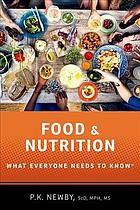

Most ebook files are in PDF format, so you can easily read them using various software such as Foxit Reader or directly on the Google Chrome browser.
Some ebook files are released by publishers in other formats such as .awz, .mobi, .epub, .fb2, etc. You may need to install specific software to read these formats on mobile/PC, such as Calibre.
Please read the tutorial at this link: https://ebookbell.com/faq
We offer FREE conversion to the popular formats you request; however, this may take some time. Therefore, right after payment, please email us, and we will try to provide the service as quickly as possible.
For some exceptional file formats or broken links (if any), please refrain from opening any disputes. Instead, email us first, and we will try to assist within a maximum of 6 hours.
EbookBell Team

5.0
88 reviews"It seems that practically every day there is news about some new super-nutrient, super diet, or super food that promises to help us to be healthier, smarter, happier, fight disease, lose weight, or live longer. Some of this information propels temporary food or diet fads, some of it is subsequently discredited, and some becomes staid wisdom of healthy eating. It structures the way we eat and consume, the research agendas of food scientists, and the ways in which food companies market their products -- and therefore the ways in which the global food system is built. It also affects the environment, food and animal ethics, political and social movements, public policy, and, of course, our health. This volume of the What Everyone Needs to Know series will look at food systems globally and also historically to explain how food production, diets, and nutrition science have changed across time and space. It will begin with a chapter on food revolutions (from hunter-gatherers, to the birth of agriculture, the industrial revolution, the green revolution, and genetic and food technologies); followed by chapters on basic concepts in nutrition science; food choices; the politics of food environments (farms, supermarkets, restaurants, farmers markets, community farms, and food trucks); modern food production and health (conventional v. sustainable agriculture, the meaning of 'organic' and 'whole' foods; food packaging); the environmental costs of food production; animal-based diets; beverages; plant-based diets; and nutrition guidelines and food labels. The book concludes with a chapter on food technology (personalized diets, 3D printing of food, the food supply, and the future of hunger)"--